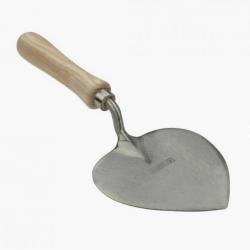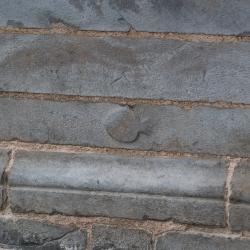South transept portal of Saint Honoré
While each of the west portals is unified in theme and was probably executed quite quickly, the south transept portal bears witness to work over an extended period and changes of intention. The lowest level including the interlaced arches belongs to the earliest work at Amiens in 1220: the mason's trowel in the lowest courses on the left of the portal may indicate the placing of a foundation stone or the burial spot for Master Robert de Luzarches. The stolid figures of clergy and angels lining the portal belong to the 1230s--the style matches that of the western portal of Saint Firmin. Towards 1240 the voussoirs were installed, bringing an extended program of key Old Testament figures from Adam to John Baptist and major and minor prophets. It is hard to understand how this learned program was thought appropriate to frame the frankly demotic theme of the tympanum which depicts the life and miracles of the sainted bishop Honoré (patron saint of bakers, hence the Boulevard Saint Honoré in Paris). At a time of financial and social crisis the clergy were looking to deploy their most popular interlocutors. However, at the last moment (c.1250) presumably at the request of a wealthy donor, it was decided to relegate the bishop from the central trumeau and insert the charming Vierge dorée carved in the most fashionable Parisian style.
This was the portal used every day by members of the clergy passing from their homes in the cloister to their stalls in the choir.

